

Acknowledgement
This work is supported by the Swiss National Science Foundation (grant no. 170226) for the European FLAG ERA project ’FuturICT 2.0 - Large scale experiments and simulations for the second generation of FuturICT’ (https://futurict2.eu/).
Project Lead FuturICT 2.0
Dr. Mario Paolucci, Senior Researcher, Laboratory for Agent-Based Social Simulation, Consiglio Nazionale delle Ricerche, Rome, IT
https://www.istc.cnr.it/en/people/mario-paolucci
Project Lead Finance 4.0
Chair:
Prof. Dr. Dr. h.c. Dirk Helbing, Chair for
Computational Social Science, ETH Zurich, CH
https://coss.ethz.ch/people/helbing.html
Project Lead:
Stefan Klauser, Chair for Computational
Social Science, ETH Zurich, CH
https://www.linkedin.com/in/beinnovative
R&D Lead:
Dr. Marcus Dapp, Chair for Computational
Social Science, ETH Zurich, CH
https://www.linkedin.com/in/marcusmdapp/
Authors
Prof. Dr. Dr. h.c. Dirk Helbing
Stefan Klauser
Dr. Marcus Dapp
Mark Ballandies
https://ch.linkedin.com/in/ballandiesmc
Benjamin Aaron Degenhart
https://de.linkedin.com/in/bdegenhart
Sergiu Soima
https://www.linkedin.com/in/sergiusoima/
Dr. Anabele-Linda Pardi
https://www.linkedin.com/in/anabele-linda-pardi/
Fatime Ahmeti
https://www.linkedin.com/in/fatime-ahmeti/
Max Roessner
https://www.linkedin.com/in/maxroessner/
Qusai Jouda
https://www.toptal.com/resume/qusai-jouda
Evangelos Pournaras
http://evangelospournaras.com/
Gabriel Hirschbaeck
https://www.linkedin.com/in/gabriel-hirschbaeck/
Editors
Lewis Dale Translation & Editing
https://ldgermantranslation.com/en/home/
The Relevance House
https://www.therelevancehouse.com/
eBook / Graphics
The Relevance House
2
Acknowledgement
3
Preliminary remarks
One of the central goals of the FuturICT2 project was to make our insights available and digestible to a much wider audience than a typical multi-year academic research project. As the project deals with topics ranging from complex systems to blockchain technology, that was not an easy undertaking. The challenge we faced was to find a mode of presenting interesting results and new thinking in a way that is engaging and understandable. This process gave the final ebook more of a popular-science character: we are using references, though sparingly, and we use colloquial language though aiming to be precise.
The second measure we took to make the results available to as many people as possible, is to use open copyright licensing schemes throughout. This ebook is available under a Creative Commons Attribution-ShareAlike 4.0 International license (see https://creativecommons.org/licenses/by-sa/4.0/ for what you are allowed to do with the ebook). Likewise, all source code of the Finance 4.0 demonstrator is open source software, licensed under the GNU Affero General Public License v3.0 (see https://www.gnu.org/licenses/agpl-3.0.en.html ).
We hope that the choices we made help spread the ideas presented here and start a larger conversation about how to become more sustainable at scale!
Preliminary remarks

Institute of Cognitive Sciences
and Technologies of the
National Research Council
(ISTC-CNR) of Rome, Italy

Universitatea Transilvania
din Braşov, Dept of
Automation and Information
Technology, Romania

Riga Technical University
(RTU), Riga, Latvia

Université de Namur,
Belgium

Swiss Federal Institute
of Technology/GESS
(ETH), Zurich, Switzerland

Tallinn University of
Technology (TUT) Institute
of Cybernetics, Estonia

Centre d’Analyses et de
Mathématiques Sociales
Institut des Systèmes Complexes
(CNRS), Ile de France, France
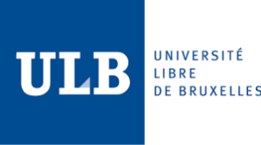
Université Libre de Bruxelles,
Machine Learning Group
(MLG), Belgium

Université Catholique de
Louvain (UCL), ICTEAM
and MiiL, Belgium

Politecnico of Turin,
Italy

Institute de Recherche
Scientifique et Technique
sur l’Environnement et
l’Agriculture (IRSTEA), France

Auvergne University,
Clermont, France
Partners – FuturICT 2.0
4
Partners – FuturICT 2.0
Partners –
Blockchain school for
sustainability (BETH)
5
Partners – Blockchain school for sustainability (BETH)
Contents

6
Contents
19 Creating token-based finance and governance framework
21Introduction to distributed ledger technology (DLT) and taxonomy
24 Design choices and requirements
27 Values and ethical considerations
32 Ensuring democratic legitimacy
37 Cryptoeconomics and its relevance
38 Why is effective cryptoeconomic design (CED) important?
40 How to design cryptoeconomic systems to solve a problem
42 How we designed a FIN4 cryptoeconomy
54 Digital wallet and obtaining ether tokens
57 FIN4Xplorer: Demonstrating the FIN4 design space
58 Phase 1: SLIC – Slick but centralized
59 Phase 2: FAB5 – “Fabulous Five”
63 Blockchain governance and practical implications
76 Scaling up the Climate City Cup
83 World Wide Fund for Nature (WWF)
83 Keep It Small and Simple (KISS)
84 FuturICT 2.0 research intersecting with FIN4
86 Outlook: Where to go from here?
87 Overview of the various Finance 4.0 research projects
90 Deep demonstrations: showing what is possible
How to navigate



Navigation bar. Tap to go to...
Home
Tap the
logo to
go to first page
External link
Tap to open link in a new
browser-window or -tab
Glossary term / reference
Tap to go to glossary or
reference section at the end
of this paper
Internal link
Tap to jump to page containing further information
Home
Contents
Glossary
Help







First page
Table of contents
Glossary
This page
Start of current chapter
Previous page
Next page
Next chapter





7
How to navigate

FuturICT 2.0 brings together top minds in social science, complexity science and computational science to help advance a more resilient, adaptive and sustainable society. Its Finance 4.0 concept (FIN4) implemented at Prof. Dirk Helbing’s Chair for Computational Social Science at ETH Zurich, is developing a decentralized platform using blockchain and IoT technology to promote more sustainable societies in order to meet global challenges of the future.
FuturICT 2.0 is a European research project whose consortium comprises 12 members with complementary expertise from Italy, Switzerland, France, Latvia, Romania, Belgium and Estonia, plus a number of supporting partners from all around the world. It is coordinated by Mario Paolucci of the Institute of Cognitive Sciences and Technologies in Italy.
Executive Summary
8
Executive Summary

The world is facing existential threats. These challenges are putting a strain on our economy, society and environment.
The unresolved problems of the 2008 financial crisis still endanger the economic stability of Europe and the world. Many nation states are unable to contain the power of major banks and global corporations in the current system. We’re told to accept they’re “too big to fail” – skewing incentives with moral hazard.
Digitalization and globalization are increasingly creating an interconnected world. While this process has brought much progress and improved standards of living, it has also produced a general crisis of sustainability.
The globalized economy now comprises a massive, complex network of systems that are now much harder to map and control than the economies of the twentieth century. One of the critical problems is that today’s economic order is creating systemic market failures due to all sorts of unwanted externalities. A concerted global effort to regulate and account for these externalities is yet to be seen. Pricing externalities in dollars, for example, is not expected to be sufficient. As a result, a series of ecological crises threaten the very basis upon which our economy is built.
What’s more, resource scarcity and access to these resources are becoming a growing concern. The use of fossil fuels and raw materials has tripled in the last 40 years and climate change may lead to the extinction of one sixth of all species. Not to mention the additional challenges posed by war, terrorism and the migration of displaced peoples.
At every scale, individual incentives today are often misaligned with the core values each of us holds.
As a consequence, the world suffers from an overall lack of sustainability.
How should we tackle this web of interdependent, complex crises and resolve some of the fundamental challenges humanity faces?
This is where FuturICT 2.0 comes in.
We pursue disruptive innovation to address the root cause of these problems – a lack of sustainability – by combining the Internet of Things, blockchain technology and complexity science to open up new opportunities.
In alignment with the UN’s Sustainable Development Goals (and potentially other sets of goals the world may decide to choose in the future), our proposal Finance 4.0 (FIN4) concerns a multidimensional incentive system for managing complex systems and promoting a circular sharing economy. The aim is to create a high quality of life for more people with fewer resources by aligning individual incentives with core values – defined and driven by the communities themselves.
Finance 4.0 encompasses a socioecological financial system, a novel economic system and a new social contract.
•Finance: a multidimensional cryptocurrency ecosystem promoting positive action
•Economics: a new incentivization scheme influencing production and consumption to promote a circular and sharing economy
•Social Contract: community-based decision-
making allowing for subsidiarity as well as local and personal individuality
FIN4 is democratic, pluralistic and inclusive. It leverages information and communication systems to empower everyone to take better decisions, be more creative, as well as coordinate and cooperate with others – leading to
better business models, products and services, smarter cities and smarter societies.
Are you inspired by this positive vision? Okay, let’s get started then!
Background

9
Background
How many Earths would we need
if the world’s population lived like…
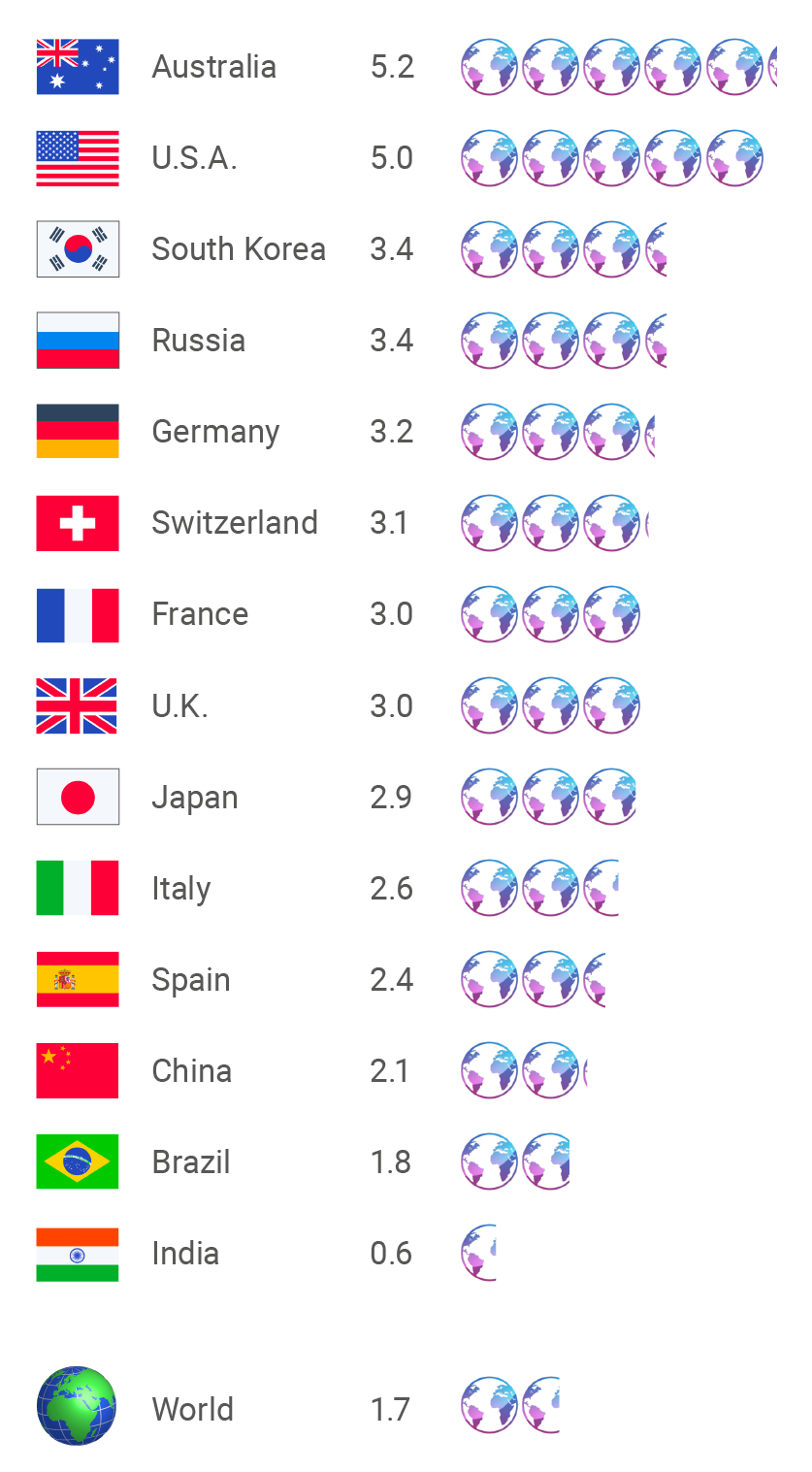

10
Background

Finance 4.0
We’re developing a novel, socioecological finance system that enables the incentivization of environmentally friendly behaviour, socially responsible production, resource recycling, sharing and more. We call this system Finance 4.0 – where Finance 1.0 refers to a physical coin-based system, Finance 2.0 to a fiat currency system, Finance 3.0 to blockchain finance, while Finance 4.0 stands for a multi-
dimensional, real-time feedback system that combines blockchain technology with the Internet of Things. We abbreviate this system to FIN4.
Photo by Artem Beliaikin on Unsplash
11
Background

Photo by Cameron Casey on Pexels
In contrast to the citizen score, the FIN4 approach is different in a variety of aspects:
• It is not aimed at punishment and control, but rather helping to encourage, empower and coordinate.
• It is intended for local, temporary measurements and feedback, not global surveillance and control.
• It seeks to protect the privacy of people, rather than keeping information about everyone and every action forever.
• It is not focused on the individual in the sense of profiling and targeting, but on social and environmental goals.
• It offers a multi-dimensional choice of options, instead of trying to determine every individual’s action through behavioural manipulation and control.
• It has a participatory opt-in nature, where people can shape the incentive system in such a way that they reach their goals more successfully.
• With multi-dimensional incentivization, it becomes possible for everyone in the system to gain from the interactions people engage in; multi-dimensional value exchange increases the solution space enormously.
FIN4 vs. the Citizen Score
12
Background

FIN4:
Framework

13

FIN4 aims to create a self-organizing, nuanced incentive system that supports the daily decision-making of people by encouraging desirable actions and discouraging undesirable behaviours.
To promote sustainability, it’s important that the FIN4 system takes account of externalities. By giving externalities prices and allowing them to be traded, they can be internalized. This would reflect costs and benefits more accurately in a multi-dimensional way. Externalities can be positive (like certain kinds of innovation or infrastructure) or negative (such as pollution).
FIN4 focuses primarily on positive action, rather than on sanctions, for the following reasons:
As an opt-in system, it would be almost impossible to motivate participants to join if they would face a negative balance of tokens, taking into account negative externalities. Obtaining tokens for positive action is a much better value proposition. FIN4 therefore works on the basis of rewards for positive actions, rather than punishments for negative actions.
Our values often seem to be detached from our daily choices. Using a smart distributed incentive system, however, communities can reward what they value, by issuing new types of tokens to address local needs.
These positive actions are whatever the community considers to be valuable. Examples may include planting trees, using a bike rather than a car, helping a person in need, or recycling.
In this case, the tokens can take on any form of value for the communities. They can be fully symbolic (imagine a virtual trophy representing a tree you’ve planted), give access to a service (such as free bicycle maintenance) or even have a monetary value.
The core process of FIN4 is illustrated below:
Overview
14
FIN4: Framework – Overview
15
FIN4: Framework – Overview
A type of token is created with a name, a short ticker symbol (similar to “USD” or “BTC”) and a statement to describe the purpose of the tokens. Users can record actions and then claim the respective tokens. A claim may be proven in three different, combinable ways:
•Sensor proofs are provided by data transmitted from an IoT sensor or device for location, humidity or temperature, for example. This includes mobile proofs from a user’s smartphone (such as documenting photographs).
•Social proofs are carried out with the involvement of other users who attest that a certain action has been performed.
•Third-party data proofs utilize external sources of data where this can’t be generated within the FIN4 system directly.
Example:
Alice creates a type of token for incentivizing people to pick up and dispose of litter they find in natural parks. The community collectively likes this idea and adopts it. While hiking, Bob finds an empty plastic bottle and takes a couple of photos showing where he found it and where he disposed of it. Bob uploads these pictures to the claiming platform and other users approve his claim, rewarding him with a number of positive action tokens.
Sensor or mobile proofs require security measures in the hardware or software to prevent cheating, such as double claiming. Social proofs need an additional incentive layer that motivates other users to provide attestations in good faith, while also preventing collusion.
Core process
16
FIN4: Framework – Core process
17
FIN4: Framework – Core process

Placing real-life data on the blockchain is a non-trivial problem and can be susceptible to manipulation or faults. In practice, it will likely require combinations of these proofs (like in our example above) in order to adequately prevent cheating. After all, data may not necessarily represent the truth of real-world actions. An oracle based on third-party data could be required to prove the data submitted before it is irrevocably placed on the immutable blockchain.
Once a claim has been proven using these approaches – or indeed combinations of them – the tokens are minted and transferred to the claiming user.
The prover may be the token’s creator, a dedicated group of people (such as token holders) or any random user, depending on the nature of the action and type of token. The most effective and useful token systems will likely be approved and adopted by the community in a self-organized and self-sustaining manner.
A key problem with unsustainable behaviour is the long timespan between actions and consequences. For instance, people have been burning coal for two centuries and driving motor vehicles for one century, while carbon dioxide emissions have only recently been acknowledged as a serious global problem. This time lag generates a form of cognitive dissonance.
Therefore, an important design principle of the feedback system in FIN4 is that time lags between actions and consequences – or claims and proofs – should be as short as possible.
Time lag

18
FIN4: Framework – Time lag
We envision a multi-layered, multi-dimensional system of decentralized digital cryptocurrencies created at different levels with different characteristics, serving different purposes.
The token systems may operate at a supranational, regional or local level. The different purposes may address environmental, social or other values relevant to the sustainability agenda at the respective level.
The FIN4 core system comprises a token economy and a governance framework. The token economy gradually emerges as communities asynchronously create, obtain and trade positive action tokens, thereby creating a market for these positive actions.
In order to align user incentives towards the creation of this market, a governance layer is needed that supports the healthy development of the token economy. This governance layer uses a
governance token (GOV) to offer mechanisms that allow users to collectively decide on which tokens to promote as “official FIN4 tokens”.
Any system that allows users to propose new token designs will have to contend with the problem of spam. How can we ensure the ecosystem promotes useful token concepts?
Rather than establishing rules and barriers to restrict the creation of tokens, our design leverages the innovative capacity of independent token proposals. Every token idea is welcome, but acceptance as an official FIN4 token requires users to vote for it with their GOV tokens. Thus, all users co-maintain a list of approved Positive Action tokens.
The reputation tokens to facilitate social proofs do not currently exist at this scale. Its purpose is to help users establish trust in one another in order to interact effectively on the platform. Reputation should reflect the support of the system by the user (e.g., proving, voting, etc.) and not their actual positive action token holdings, which could otherwise introduce bias to the reputation system.
Reputations should reflect the positive actions performed by the user and not their actual token holdings, which could otherwise introduce bias to the reputation system.
In our current design, users obtain reputation tokens by performing actions that support and strengthen the entire FIN4 system. As a minimum, the actions suitable for obtaining these reputation tokens include the active obtaining of tokens (low reward), participation in proof mechanisms (medium reward) and the creation of accepted token concepts (high reward).
Users should also be able to lose these reputation tokens. However, the details of this mechanism are still being developed.
Also, how can we incentivize entire communities that may already have their own tokens established to join the larger ecosystem? The idea is to represent the additional liquidity won when joining the larger FIN4 network through a “reserve currency” we call liquidity token (LIQ). This token would stand for the network effects gained when enabling larger networks and markets.
One conceivable, yet too simplistic approach would be to create the same number of FIN4 tokens for each accepted token proposal. The overall number of liquidity tokens would therefore be commensurate with the total number of FIN4 tokens in the system, giving users more trust in using the different tokens and some assurance that these tokens can be exchanged with one another. This could be based on the original idea of “Bancor” by John Maynard Keynes, however the final design has not yet been decided.
Due to the nature of blockchain technology, blockchain creators are unable to prevent trades beyond the confines of the system. Our approach is to create strong incentives to use the platform, while preserving the freedom of users to leave at any time and take their token balances with them.
A form of identity is only required when users wish to participate in the governance of FIN4. Identity here corresponds less to the idea of a scanned passport and more to a concept of self-sovereignty built entirely within the FIN4 system or transferred from other platforms. Reputations may establish identity over time.
Due to the nature of blockchains and cryptoeconomics, blockchain developers are technically unable to prevent trades from happening beyond the confines of the system. Our approach must therefore be to create strong incentives to use the platforms, while preserving the freedom for users to leave at any time (and even taking their token holdings with them). This ability to exchange tokens is also essential for their value and utility.
Creating a token-based
finance and governance framework
19
FIN4: Framework – Creating a token-based finance and governance framework
















FIN4
Governance
Economy
Governance
Society
Identity
Identity
Anonymity
Positive
action
economy
Economy and governance
of multi-token economies
20
FIN4: Framework – Creating a token-based finance and governance framework

Introduction
to distributed ledger
technology (DLT)
and taxonomy

21

What definitions are currently used in practice for concepts like tokens, transactions and consensus? And what exactly is distributed ledger technology?
The blockchain community still suffers from a general lack of a shared understanding of terminology, making comparisons between different blockchain-based projects difficult.
To facilitate a common understanding and as part of our research towards the FIN4 system, we prepared a systematic taxonomy of distributed systems.
We define distributed ledger technology as a range of distributed data structures in which entries are recorded by participants after reaching consensus on their validity. A consensus mechanism – the set of rules for transaction validation – is integrated into the DLT system to ensure system reliability, where no trusted third parties are required to authorize or validate entries. Distributed ledgers often support secure cryptoeconomies. These rely on digital tokens and cryptographic techniques to determine how exchange is performed between participants. The most well-known and successful example of a DLT system is Bitcoin.
While our taxonomy paper goes on to provide a more extensive introduction to the topic, a conceptual architecture of distributed ledger technology is shown besides:
Incentivization may occur on either the consensus or action layer. The first generation of blockchains are known as cryptocurrencies. They are chiefly based on incentive systems that maintain consensus mechanisms in the digital world.
The second generation of blockchain projects are based on smart contract engines. These allow for the creation of tokens – like on the Ethereum platform. These tokens can be utilized to incentivize people or machines to perform certain actions in the real world. One example for a token standard that creates fungible (exchangeable) tokens is the widely used ERC20 token standard on the Ethereum smart contract platform – also used as a basis for our positive action tokens in the FIN4 system.
FIN4 takes full advantage of this possibility by not only creating a range of platform tokens used for governance, but also offering users mechanisms to create tokens as they wish.
The taxonomy paper categorizes different examples of existing tokens by means of several attributes. These attributes include the underlying (the value a token represents), the regulation of action/read permissions, the supply property (how the supply of tokens is regulated), the transferability and the condition governing the minting of new tokens. It also covers the various consensus mechanisms that exist, such as “proof of work” and “proof of stake”.
Our FIN4 system will foster communities that can create and use tokens to promote the sustainable action they consider important, following a consensus framework we call “proof of good work”.
Many aspects of cryptoeconomic design will be available to these communities when creating token proposals. Community members will be able to configure a range of token attributes. For example, what is the claiming process? Who is able to approve claims? And how many tokens should be minted for every verified positive action?
Introduction to distributed ledger technology
(DLT) and taxonomy

22
Introduction to distributed ledger technology (DLT) and taxonomy
23
Introduction to distributed ledger technology (DLT) and taxonomy

Design choices
and requirements

24

What kind of data will be stored on the blockchain? What will be stored off-chain and where? And what are the technical requirements for a blockchain, smart contract system and wallet to enable the FIN4 system?
The FuturICT2.0 project is a research project in the first place. However, in order to contribute to solving real-world sustainability issues, our ambition was also to lay the groundwork of a system that can survive under real-world conditions applying system engineering methods.
As a first step towards developing a demonstrator platform, a series of workshops was conducted with the team, aiming at compiling an initial list of requirements.
Two expert workshops were organized in 2018 to examine a range of specific challenges. A proving workshop in Zurich covered topics relating to the design and use of oracles, while a cryptoeconomics workshop in Berlin discussed some of the decisions made for the incentive system.
Based on the results of the requirements phase and the workshops, the following functional architecture was developed to describe the core functionality of FIN4:
The FIN4 system consists of three main layers:
•A blockchain layer:
The blockchain including the smart contract engine serves as backbone to make FIN4 a decentralized, peer-to-peer platform. Transactions, data on smart contracts and balances on tokens are stored immutable and tamper-proof on the blockchain ledger.
•A smart contract layer:
FIN4 smart contracts get deployed onto the blockchain. They comprise both the operation logic and the storage of most of the data. All of the functionality lies here and is accessible even from outside the FIN4 application. While most data is stored directly on the contracts, media files provided to proof claims (e.g. a picture of a planted tree) are uploaded to IPFS, the InterPlanetary File System and only its identifier are stored on the smart contract. The claims pool is not yet implemented.
•An application layer:
The purpose of the application layer is to interface with end users – typically via web or mobile applications. While a default client for both web and mobile is provided, third parties can also interface with the system by building their own clients. Thus, they can limit the functionality the FIN4 smart contracts provide. Extensions to the FIN4 core system however can only happen on the smart contract layer.
Suitable programming languages and frameworks have to be defined to implement this functional architecture. For the smart contract engine and blockchain layer, we chose the Ethereum platform. Ethereum is a relatively widespread and established smart contract engine, with a large community of developers and projects, as well as a broad range of development tools.
The FIN4Xplorer is running on the Rinkeby test net. There are currently no plans to make the demonstrator available on Ethereum’s main net, as high costs would be incurred and there would be no immediate gain in functionality or performance. But projects that follow on from FuturICT2.0 in the future may choose to take this route.
The FIN4 smart contracts are written in Solidity and deployed using Truffle as a framework and Infura as a provider.
The FIN4 client we provide is a web application written in JavaScript using the React library. The layout is optimized for viewing on both desktop and mobile browsers that are Web 3.0-enabled. It is currently hosted on an EC2 instance on Amazon AWS.
Our early attempts to use a sensor as proof type used a Node server to receive the signal from the sensor and forward it to a smart contract, acting as an oracle.
Design choices
and requirements
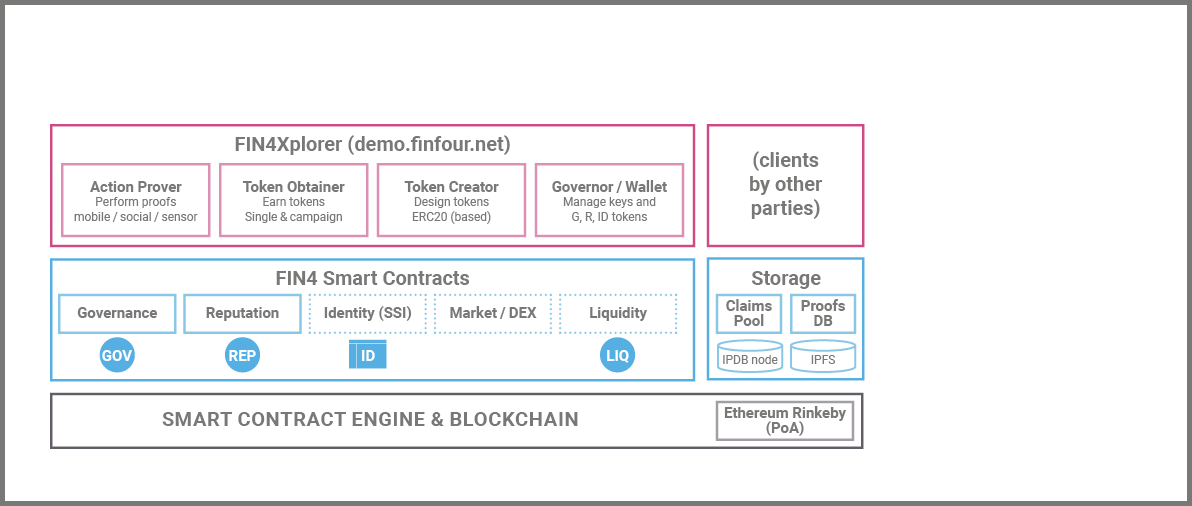
FIN4 ARCHITECTURE
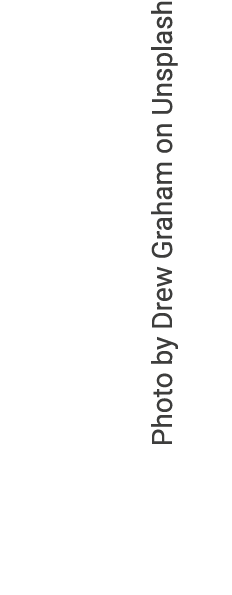
25
Design choices and requirements


FIN4 Architecture
26
Design choices and requirements
Governance
Claims Pool
Ethereum Rinkeby (PoA)
Proofs DB
Reputation
Identity (SSI)
Liquidity
Market / DEX
Action Prover
Perform proofs
mobile / social / sensor
Token Obtainer
Earn tokens
Single & campaign
FIN4Xplorer (demo.finfour.net)
FIN4 Smart Contracts
Storage
Smart contract engine &
Blockchain
(clients
by
other
parties)
Token Creator
Design tokens
ERC20 (based)
Governor / Wallet
Manage keys and
G, R, ID tokens
GOV
REP
LIQ


IPDB node
IPFS

ID

Values and
ethical
considerations
The world faces major challenges as a consequence of insufficient sustainability. We assume that current economic incentives which fail to effectively reward sustainable behaviour are partly responsible for this problem.

27

One of the key objectives of the FIN4 platform is to address sustainability issues and resolve negative environmental externalities with positive action. We hope to achieve this by creating a system that enables communities to define sustainable and socially desirable actions and to reward individuals who align their behaviour with these goals using exchangeable incentive tokens. Note, however, that not everyone needs to engage in the same kinds of actions to be rewarded. On the contrary: the system supports specific actions fitting personal preferences and talents. In this regard, the multi-dimensionality of the approach is highly relevant.
Sustainability

28
Values and ethical considerations – Sustainability
In order to achieve this transformation towards a world which is more aware of sustainability, the FIN4 system follows a bottom-up approach that enables everyone to participate, contribute their own ideas and protect the system for the benefit of the community.
Communities should not only be able to determine the values and token concepts most important to them, but also to shape how the platform develops. The users themselves will also be essential for maintaining the system and protecting it from abuse – via the reputation tokens. These tokens will enable every user to have a say on which token proposals to accept. However the weight that their votes carry will depend on how trustworthy their conduct has been.
29
Values and ethical considerations – Inclusivity
Inclusivity
We believe that people should be encouraged, not compelled, to participate, which speaks for an opt-in platform. Users would be able to interact with the FIN4 platform as long as they wish – and also leave, when they want, perhaps even with the possibility to take their token holdings with them.
The decentrality associated with DLT – for both data storage and decision-making – is intended to prevent a single point of failure or authority. This provides protection against censorship or inappropriate control or other arbitrary interventions, since data is stored immutably on the blockchain.
What’s more, user identities are pseudonymized, thereby protecting the privacy of individuals. Anonymity is an essential requirement of democratic systems and allows participants to engage in independent decision-making.
The pursuit of multiple objectives can, however, result in conflicting goals, which we realized in particular thanks to input from ethix – the lab for innovation ethics.
We attempt to minimize these conflicts using appropriate coordination mechanisms, and where they are too limited, suitable governance. We outline these ethical considerations below.
Freedom
30
Values and ethical considerations – Freedom
Containing misuse
We don’t dictate to users what behaviour we consider socially desirable. We leave this decision to the community. So, how can organized crime or other misuse of the platform be prevented? If users acted in bad faith or for their own purely selfish interests, they may indeed start to reward actions with tokens that don’t accord with the moral principles of the project.
Such misuse would not only harm the FIN4 community, it might also have wider consequences for society.
Nonetheless, we trust that a critical mass of users can prevent this situation, as they have the power to downvote token proposals created in bad faith. Trustworthy users – i.e. those with more reputation tokens – will have a greater voice in determining the list of official tokens. This mechanism will also avoid excessive spam in the system.
31
Values and ethical considerations – Containing misuse

32
Values and ethical considerations – Ensuring democratic legitimacy
The inclusivity and voluntary nature of the platform mean that the issuance of tokens will be legitimized by a high level of participation, with decision-making being subject to voting.
But there’s a risk that a consistent majority will end up holding a position of power, such that individuals with minority positions may be discriminated against to some degree. This could be exacerbated – to some extent – by the reputation tokens, as they would allow certain groups to accumulate voting power.
In order to prevent such a scenario from happening, a maximum number of reputation tokens should be defined – with no user able to hold more than this limit. This could help to contain the risk that a certain group accumulates too much power (see: Chapter on Governance).
Ensuring democratic
legitimacy

Avoiding social pressure
33
Values and ethical considerations – Avoiding social pressure
While we hope that FIN4 proves useful in promoting a sustainable society and that the platform enjoys widespread adoption, we realize that mass adoption could result in growing social pressure on non-users to join the platform. This would potentially contradict the voluntary nature of the platform.
Those who choose not to participate may face exclusion from certain kinds of transactions – a situation that would put the core value of freedom at risk.

Governance

There are also important ethical considerations in terms of platform governance.
Once we launch the platform, the integrated governance mechanisms will largely determine the success of FIN4 – especially as we will then cede the content and structure to the community, losing our ability to make subsequent changes.
Anticipating these potential risks ahead of time is therefore key. In this respect, our approach to governance includes the following:
•Blockchain: This technology permits decentralized decision-making as well as transparent data storage. The security risk is distributed across the network and thereby minimized. Furthermore, pseudonymous participation is compatible with the core values of inclusivity, privacy and freedom.
•Openness: The platform is open to anyone who wishes to participate. This structure is intended to legitimize the new decision-making processes.
•Community moderation: A hierarchy will emerge between users with different balances of reputation tokens, which are given to those users who commit time and effort to the platform. These tokens will help protect the platform from bad actors. The combination of inclusivity and a time and effort-based hierarchy may produce both meritocratic and democratic effects. What’s more, the use of quadratic voting would reduce the risk of certain users accumulating too much voting power.
34
Values and ethical considerations – Governance

Cryptoeconomics
Could currencies with multiple dimensions improve the stability and resilience of the overall system? What are the implications of a circular and sharing economy? And how should the incentive system be designed in order to enable this circular economy to emerge?

35

As already mentioned in connection with our DLT taxonomy, there is a lack of commonly agreed terms in this field. This is also true for the term “cryptoeconomics”.
Vitalik Buterin – the founder of Ethereum – has offered a definition that we can agree with. He posited that cryptoeconomics is a discipline that combines cryptographic proofs of past events with economic incentives to encourage future events as part of a blockchain system.
The cryptographic element mainly encompasses consensus algorithms, digital signatures and hash functions, and has more recently progressed to include zero-knowledge proofs, multi-party computation and homomorphic encryption. The economic element involves principles of game theory, mechanism design and network economics. As explaining all these terms deeper is out of scope for this ebook, we recommend interested readers to consult Wikipedia for simplified definitions.
In a nutshell, the aim of applied cryptoeconomics is to design new economies based on cryptographic tokens and mechanisms in order to create incentive systems for users.
What is cryptoeconomics?

36
Cryptoeconomics – What is cryptoeconomics?

Web 2.0 applications refer to platforms like Facebook, Google or Amazon. These stand in contrast to the emerging Web 3.0 – or decentralized applications (known as DApps) – which are relevant to FIN4. Decentralized applications run on peer-to-peer networks, where no node typically enjoys privileges over other nodes. This is quite unlike Web 2.0 apps controlled by a central provider.
While in both cases, functional and error-free code is required. This is not enough for Web 3.0. That’s because DApps encode economic incentives using smart contracts in order to incentivize certain actions. In the example of Bitcoin, miners are rewarded with newly mined bitcoins for successfully mining a new block.
These mechanisms are cryptographically protected and very difficult to change. This means modifications to the software require the coordinated effort of all nodes. Where only a majority of nodes cooperate, rather than all, the network runs the risk of diverging in a “fork”.
So what are the risks of a Web 3.0 environment?
Even if the code of DApps is flawless, the decentralized system may still fail due to the mechanisms built into the network if they’re based on inaccurate assumptions about user behaviour. This is particularly true if the system neglects to consider potential misuse, malicious action and user mistakes. Effective cryptoeconomic design (CED) therefore needs to take all this into account.
Cryptoeconomics
and its relevance

37
Cryptoeconomics – Cryptoeconomics and its relevance
First of all, implementing the values of a developer community into individual incentives for a larger user base is rather difficult. Good Cryptoeconomic Design CED seeks to reduce the potential for incentive misalignment at the various levels of the system (see Figure on next page).
Second, effective CED is vital since the possibilities to implement subsequent changes or corrections to a live DApp are very limited. Smart contracts written on a blockchain can neither be stopped nor modified easily.
Third, CED needs to take into account the challenge of designing and enabling the emergence of a complex system, where multiple variables and interrelationships come into play.
And fourth, cryptoeconomic design must reflect the implicit objective of cryptoeconomic systems to translate the values of a community into specific incentives for individuals. For instance, the Bitcoin community values secure and non-censorable transactions. The system therefore promotes decentralized mining to run the transactions. On the other hand, minimizing energy consumption was not considered an important value in the Bitcoin community and no incentive – other than waste minimization/profit maximization for miners – was therefore established to pursue it.
We find Zargham’s proposed framework (see figure on next page) for analyzing CED systems useful. Here, there are five distinct layers, with each layer requiring the layer beneath and enabling the layer above.
Why is effective
cryptoeconomic
design (CED) important?
38
Cryptoeconomics – Why is effective cryptoeconomic design (CED) important?


Value Flows
Macro State Evolution (Global Goals)
Local Agent Behaviour
Product of Mechanisms,
Incentives, and Context
Interaction Patterns
Definition of Local Mechanisms and Incentives (constraints)
Trusted Computation
Cryptographically guaranteed Execution of Code
Durable Data
Trustworthy State Information


require
enables
Zargham, Michael. Creating Interconnected Collaborative Communities. Future of Trust Summit. The Hague, 2018.
https://www.youtube.com/watch?v=nOP6anxiHkk.
39
Cryptoeconomics – Why is effective cryptoeconomic design (CED) important?

The problems addressed by cryptoeconomic systems are invariably complex and, as it is a new field, standard processes for CED have not yet been established. However, a multi-scale perspective can be adopted to comprehend complex economic and cryptoeconomic systems. Policymakers can seek to change the global system behaviour either via enforced rules (which we find problematic) or incentives (which we find more agreeable). These policies affect the local behaviour of agents and, in turn, influence global behaviour.
DApps are a novel tool that can also help to achieve societal goals. In pursuit of a certain policy goal, cryptoeconomic systems can be designed to change global behaviour by influencing agents locally, while allowing for pluralism, freedom and diversity.
Decentralized cryptoeconomic systems can be designed with various components, such as a distributed ledger, smart contracts and tokens. Having opted for a DApp to implement the ideas of FIN4, it’s therefore important to identify what the system needs in order to accomplish the goal. For this the Figure from Dobler et. al can be utilized.
Once the necessary components have been identified, the DLT taxonomy we introduced earlier can be used to configure the system with the appropriate attributes.
How to design
cryptoeconomic systems to solve a problem

40
Cryptoeconomics – How to design cryptoeconomic systems to solve a problem
41
Cryptoeconomics – How to design cryptoeconomic systems to solve a problem

How we designed a
FIN4 cryptoeconomy

Our FIN4 system is designed to store a variety of information. This includes which tokens have been created, who’s claimed which tokens, who’s submitted proofs for actions, and who owns which tokens. This balance and tracking information is required for positive action tokens as well as meta tokens for FIN4 governance.
As an open, community-based system, FIN4 allows multiple roles for writing information to the blockchain. Depending on the proof mechanism, any user can approve action proofs by other users, for example. Moreover, users are able to create and obtain positive action tokens anonymously; this helps make the platform openly accessible.
We have also decentralized the necessary mechanisms to the greatest extent possible, to avoid the need for an “always-online trusted third party”.
According to the decision tree proposed by Wüst and Gervais, a permissionless blockchain is recommended for such a setup. We have therefore built FIN4 on top of the Ethereum network (a permissionless system), with the possibility to deploy to the mainnet.
Then, applying the design requirements proposed by Dobler, Ballandies and Holzwarth (2019), the FIN4 system design can be summarized as follows:
•Transparency – one of the main goals of FIN4 is to increase the visibility of certain undervalued actions. Many positive things that people do every day go unnoticed as the current monetary system doesn't ascribe value to this behavior. Visibility is also required in order for markets to emerge for the various positive action tokens, with much of this data stored and tracked on the Ethereum blockchain.
•Automation – to ensure that all users are treated as equal peers in the FIN4 system, the rules for creating and obtaining tokens as well as governance need to be codified in a neutral way, with smart contracts.
•Incentivization – FIN4 aims to create a multi-dimensional incentive system to encourage more sustainable behaviour, rewarding good actions with incentives in the form of various cryptoeconomic tokens.
To return to Zargham’s 5-layer model, FIN4 is based on an enabling economy, durable data and trusted computation in a permissionless environment. Above this layer, a set of constraints in the form of local mechanisms (for actions, proofs and token curation) as well as incentives (to create and obtain tokens and the associated actions) are defined, resulting in complex interaction patterns. Exposing this interaction to the real-world context, as defined by the community’s needs, should lead to local agent behaviour that is conducive to global goals.
We ultimately hope to enable a new type of economy that better values sustainable actions – from the perspective of communities themselves and society at large. This value should not be created in isolation, but result in a flow of values within the network to balance the demand and supply of positive actions, leading to the optimal allocation of resources to achieve global goals of sustainable behaviour at scale.
42
Cryptoeconomics – How we designed a FIN4 cryptoeconomy
Wüst et. al break down this decision process into five steps as illustrated in Figure
43
Cryptoeconomics – How we designed a FIN4 cryptoeconomy


















no
Do you
need to store
state?
Are there
multiple
writers?
Are all
writers
known?
Are all
writers
trusted?
Is public
verifyability
required?
Can you
use an always
online
TTP?
no
no
no
no
no
yes
yes
yes
yes
yes
yes
Permissionless
Blockchain
Private
Permissioned
Blockchain
Don't use
Blockchain
Public
Permissioned
Blockchain

44
Cryptoeconomics – How we designed a FIN4 cryptoeconomy

Computer simulations
In addition to being sustainable and scalable, the FIN4 system should also be resilient to unintended user behaviour. We use simulations to improve the cryptoeconomic design towards system stability and to avoid dynamics that may result from not fully accounting for the “human factor”. Our definition of an ideal stable system includes token creators with noble intent, tokens invulnerable to manipulation and users using the tokens as intended. In contrast, bad situations can occur due to token creators with malicious intent, tokens vulnerable to manipulation or users cheating.
In our agent-based approach, we have human agents which fulfill certain roles (like token claimers or token creators) and token-type agents. The FIN4 simulation code is open source and is based on time steps, using cadCAD, an open source tool for “complex adaptive dynamics computer-aided design”. At every time step, key variables are updated through actions or policies.
The simulation configuration allows for studying groups of human users as agents with certain predefined attributes (e.g. intentions, compliance to rules or commitment for defining a type of token) or with random attributes. To bootstrap a token-based economy in a community, agents can define types of tokens that will be available for claiming or allow fellow agents to create their own tokens with a certain frequency (in time step terms).
In the following table we illustrate the iterative approach that the simulation concept is built on. The simulation follows the natural stages that users encounter when joining the Fin4 system and accounts for the risks that occur at each stage.
The basic principle of FIN4 is that anyone can access the system (stage 0). Depending on their intentions, users may enter individually or as a cartel in a coordinated fashion to unduly influence the system. The main safeguard against this is to use blockchain technology: wallets and keys represent barriers and prevent user spamming (auto-registering many fake users).
Once in the system (stage 1), all users can obtain Positive Action Tokens (PATs) at their own discretion. The core problem here is cheating: users try to obtain tokens without doing the required actions. Therefore, an extendable set of proof mechanisms is put in place to support the process of proving actions. As anyone is able to create new types of PATs (stage 2), the system may face a flood of PATs. To navigate the token space and avoid malicious tokens to gain traction, users co-curate tokens and promote the trustworthy ones. As anyone is able to participate in token curation (stage 3), more complex types of malicious behavior are thinkable. To counter them, a reputation mechanism is put in place to steer how users gain power for co-governance over time.
For the evaluation of the system’s state we identified a series of behavioural and design parameters and visualized them as dimensions of a three-dimensional parameter space (see figure below).
Obtainer compliance: 1 means that token obtainers respect and fulfill the token proof type according to the demands of the token creator. -1 means that all the users find a way to claim the token without doing the action for it, by finding the weak spot of the token proof and exploiting it.
Token robustness: 1 means that the token proof is so well designed that it has no weak spots that can be exploited, yet it is simple enough not to hinder users in their claim. -1 means that the token proof mechanism is flawed and individuals can claim tokens without doing the action the token was created for.
Creator intent: 1 means that the token creator has noble intent when creating the token like e.g., slowing down climate change, feeding the poor, saving endangered species, etc. -1 means that the token creator is malicious in intent (usually focused on personal gain) for e.g. exploitation of users, public opinion manipulation for profit or destruction of private property.
The “Ideal” region of the parameter space represents the best case in which the users are compliant, the token types have robust proof mechanisms and the intention of the token creator is noble. The “Compliant Community” area is equivalent to the ‘’Ideal’’ case only when all the users are compliant. The “Danger Zones” are the worst scenarios and they distinguish themselves through the malicious intent of the token creator that can be hidden from the token claimers. On the other hand, the “Road to Hell” area is populated by tokens created with good intentions that are abused or misused by the community. The “No Takeoff” regions and the “Swamp Area” have in common the lack of compliance of the users.
At this stage of the simulations, the token types that are created are mapped back to the parameter space according to their attributes (robust or weak design) and the community profile (compliance and intention). So far, this image is a static one. The next steps are to introduce reputation (and governance) tokens and the Token Curated Registry (TCR). Once human agents will vote for token types according to their interests and will challenge official tokens for the sake of the community (or their own gain) etc. the current static picture will become a dynamic one in which PAT types will move from one area in the parameter space into another. Our goal is to study these dynamics and to establish how we can keep tokens out of the “Danger Zones” and get as many as possible moved towards the top right corner (“Ideal”).
45
Cryptoeconomics – Computer simulations
46
Cryptoeconomics – Computer simulations
The simulation follows the natural stages that users encounter when using the Fin4 system and accounts for the risks that occur at each stage.
3D Parameter Space
47
Cryptoeconomics – Computer simulations





































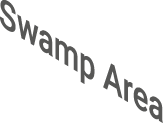

FIN4:
Demonstrator

48

Globally, we face what we could describe as a misalignment of goals and incentive structures. There are some common goals with respect to sustainability: the United Nations Sustainable Development Goals and the Paris Agreement. But while agreeing on a joint set of supranational goals is certainly important, it marks only the first step in a longer transition.
How do global goals translate into individual incentives and actions? The classic pillar builds on the concept of nation states, which internalize the global targets and integrate them into their national legislation. This regulation-based approach is undoubtedly the most commonly considered when discussing the need for more sustainability, but it seems to be too slow.
Another pillar is to build on (mostly voluntary) contributions and the self-restraint of global corporations, which also hasn’t worked so far. It has become clear that these pillars alone are insufficient to make our world more sustainable quickly enough.
We therefore propose a third pillar, based on “co-opetition” – i.e. individual contributions that are coordinated and assisted digitally, which is the basis of the FIN4 system and the Climate City Cup.
In order to develop this rapidly, accompanied by basic research in the respective fields, FuturICT 2.0 has proposed to develop a FIN4 demonstrator. This demonstrator should show that, with modern technology, it is feasible to create an environment that fosters sustainability without compromising individual freedom and subsidiarity. According to the original application, the FIN4 demonstrator is to investigate and build basic functionality such as the following:
•The ability to create bottom-up money similar to Bitcoin
•The conceptual framework of a multi-dimensional finance system (with multiple currencies representing various environmental, social and other kinds of values and costs)
•The use of this framework to price and trade externalities of different kinds
•A framework for a suitable feedback and incentive system to enable a favourable (self-)organization of socioeconomic systems
•The possibility of taxation and new opportunities for the ECB to adjust parameters of the financial system, if necessary
•The circular and sharing economy
To achieve these goals, the following technologies and principles should be applied:
•Decentralized currencies and blockchain technology to make it possible to install reliable peer-to-peer contracts, allowing the creation of a direct and sustainable sharing economy
•Internet of Things and sensors to make it possible to measure externalities and build the circular economy, with various externalities represented by different currencies which would complement the current monetary system
•Specific community-based incentives to support the self-organization of complex systems and help them to evolve towards a circular economy; resources should be used more efficiently by promoting social cooperation and climate protection
•Research could be conducted in many areas. Among other fields, the team has explored DLT systems, (behavioural) economics, cryptoeconomic design, requirements design, proof mechanisms, identity and governance.
FIN4: Demonstrator

49
FIN4: Demonstrator
50
FIN4: Demonstrator
FIN4: Demonstrator

Technical
infrastructure

51

FIN4Xplorer contains two parts:
Smart contracts on the Ethereum blockchain – required for all the functionality
A frontend or web DApp client serving as an intuitive interface with the smart contracts
We opted to use the Ethereum blockchain as it meets our requirements as an open-source, public blockchain that supports smart contracts. It’s also widely used and has plenty of resources and a large developer community.
Overview

Try out our latest live version of
FIN4Xplorer at https://demo.finfour.net.
Visit https://www.finfour.net
for more information.
52
Technical infrastructure – Overview

Warning: nerd-speak!
The web3 technologies used in Finance 4.0
The smart contracts are written in Solidity and are deployed onto the Rinkeby testnet via truffle. The Rinkeby testnet is suitable for the development stage as it uses freely available tokens – unlike the Ethereum mainnet which requires tokens obtained through exchange or mining. We simulate the Ethereum blockchain using Ganache from truffle. To store media files required by certain proof types, we use IPFS via the Infura gateway. The MetaMask digital wallet is used to connect desktop or mobile browsers to the Ethereum network. The frontend is a React app that uses drizzle from truffle to connect to the smart contracts on Ethereum. Learn more at
https://fin4xplorer.readthedocs.io

53
Technical infrastructure – Overview

For the user, the key difference between a web DApp compared to Web 2.0 services is the need for a bridge to the blockchain – or a digital wallet.
The first task of a digital wallet is to connect to the blockchain network, either via a full node run by users themselves or via a gateway service like Infura. Its second task is to appear whenever the user wishes to write data to the blockchain.
The digital wallet we’re using for FIN4 is MetaMask (metamask.io) which is available both as a browser extension for desktop (Chrome, Firefox, Opera and Brave) and as a mobile app (iOS and Android).
Once you have a digital wallet, you can follow the steps to create a new account or restore an existing account. While FIN4 is still under development, don’t forget to switch from the Main Ethereum Network to the Rinkeby Test Network to try out our platform.
The last step before being able to use FIN4Xplorer is to acquire free ether test tokens for the Rinkeby network by using either:
•The authenticated faucet at faucet.rinkeby.io (requires a social media post)
•Our faucet server available for users with less than a threshold value: click Request Ether on the demo.finfour.net landing page and wait for confirmation
When FIN4 deploys to the Ethereum mainnet, real ether (ETH) tokens or “gas” will be required for writing transactions to the blockchain. These tokens can’t be claimed from faucets (dispensers) for free; they have to be earned through mining or traded in exchange for other cryptocurrency tokens, fiat money or real assets.
Digital wallet and
obtaining ether tokens

54
Technical infrastructure – Digital wallet and obtaining ether tokens

From here, you can access the Tokens and Claims tab from the navigation bar at the bottom. The three icons in the top right enable users to display a QR Code, refresh the page and show notifications. We’ll also look at the functionality of the boxes on screen further below.
Click here to enter the demo home page.
This tab allows users to create new tokens, as well as view further information about how they work and how to claim them. Viewing a token opens a dedicated page showing details about the design and performance of the token.
See our step-by-step guide for creating a token.
The Claims tab follows the same layout as the Tokens tab. Here, you can submit new claims and view a list of previous claims.
Learn here how claims and proofs work.
Home
Tokens
Claims
55
Technical infrastructure – Home

The FIN4 platform also offers the following features:
•Wallet – for displaying the user’s token balances
•Transfers – for sending tokens to other users
•Settings – containing “About” information, system settings, language preferences and a list of relevant smart contract addresses
•Token collections – an easy way to curate a list of tokens without the collective voting process of the token curated registry
•User groups – to define admins of token collections or participants in social proofs
•Inbox – for messages about pending approvals, reasons for proof rejection, system notifications and communication with other users
•Token curation – users with enough governance tokens (GOV) cannot only view but also curate the list of official positive action tokens (OPATs) in the token curated registry (TCR)
•TCR management – here, users can claim GOV from reputation tokens (REP) and opt to delegate some of their GOV to other users
•TCR Parameters – for collectively deciding on changes to parameters of the TCR itself
Additional functionalities

56
Technical infrastructure – Additional functionalities

FIN4Xplorer:
Demonstrating
the FIN4 design space

57

Our initial version performed all blockchain interactions via a server. This architecture offered the convenient, demo-friendly advantage that users can sign up easily (with just a nickname) and participate in creating and claiming tokens within moments of accessing the web application.
The drawback, however, is that it does not live up to the standards of a distributed project. The use of a centralized server and custody of users’ private keys create vulnerability to attack, while also teaching new users a seriously flawed concept.
We had a responsibility to get it right, since many of our users’ first contact with blockchain technology would be through our DApp. Setting up and using a digital wallet will therefore be necessary to participate in our system.
Our FIN4 demonstrator software progressed through several development phases before reaching its current state.
Phase 1: SLIC –
Slick but centralized
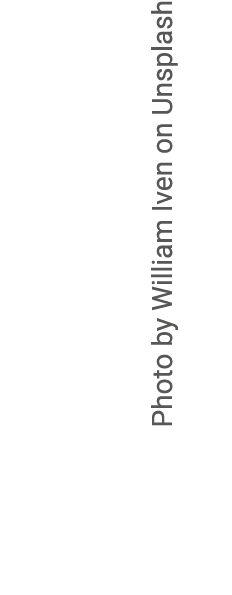
58
FIN4Xplorer: Demonstrating the FIN4 design space – Phase 1: SLIC – Slick but centralized


Phase 2: FAB5 –
“Fabulous Five”
A team of five volunteers completely reimplemented the system to address this issue and come up with a decentralized solution. Their task was to focus on the mechanisms required to link a positive action in the real world with a token balance – i.e. the steps for making claims that are proved in several different ways.
59
FIN4Xplorer: Demonstrating the FIN4 design space – Phase 2: FAB5 – “Fabulous Five”
Phase 3: XPLR – Explorer
One member of the "Fabulous Five" continued to work on the system, integrating two more significant contributions from a student thesis. These had been developed in parallel with the FAB5 reimplementation.
Another volunteer worked on a smart contract serving as a boilerplate for creating the different base versions of tokens that we outlined in the taxonomy paper. Supporting these in our DApp was a key step towards enabling the breadth of token economies we envision.
Another major building block came in the form of the token curated registry (TCR). A TCR allows an anonymous group of economically incentivized users to maintain a list of entries by submitting votes or challenges. We use this tool in our governance layer for maintaining the list of official position action tokens (OPATs).
What’s more, this phase saw the introduction of more new features including the ability to create user groups, token collections, messages, our own ether faucet, and QR Codes, as well as to transfer token balances.
60
FIN4Xplorer: Demonstrating the FIN4 design space – Phase 3: XPLR – Explorer

Our roadmap envisages many more features for FIN4.
For instance, a campaigning tool that enables claimers to be rewarded with tokens if the number of claimed tokens in that collection reaches a certain threshold value.
Another significant extension will be liquidity tokens as a way to harness the network effects when making pre-existing token networks available in the FIN4 ecosystem and thus giving more credit and trustworthiness to individual token projects.
In terms of the proof types available, we intend to extend the range of IoT sensors that can be used as automatic approvers via an API-style interface.
We may also add logical rules to social proof mechanisms – for example, a claim may be proved if more than half of a certain group of users approves.
As the number of token types increases within the system, users should also have more and more tools to distinguish or brand their collections, using colour schemes, logos and keyword discovery.
We also envision tools for facilitating token trading between users.
As the FIN4 ecosystem grows and develops, so too will its functionality.
Outlook

61
FIN4Xplorer: Demonstrating the FIN4 design space – Outlook

Identity and
governance
FIN4 aims to create an open-source, distributed platform for communities willing to incentivize sustainable actions. Sustainability, privacy and individual freedom are key to the platform. FIN4 therefore incorporates different types of identity and distributed governance on multiple levels.
But how do participants identify themselves? To what extent can reputation replace ID? How can we prevent malicious use and accumulation of power? And how can we assure participation in governance and meaningful debates?
These questions are far from trivial and can be approached from different perspectives.

62
Code – and any implementation of blockchain-based governance – is always embedded in a social context. Every DLT project is nestled in a political reality, with laws and decision-making procedures, and can’t be seen as fully independent. Whenever we talk about on-chain governance within FIN4, we see the decisions taken as part of a greater social system. And these actions and decisions are bound to the same rules, laws and regulations as other projects.
Nevertheless, blockchain-based systems allow us to support a power shift from central top-down structures to federalist bottom-up communities. So they don’t simply cement the status quo. Today, DLT systems can often incorporate processes resembling consultative democracy.
In the case of FIN4, our goal is to implement a direct democratic voting system linked to the reputation system which is inherent to the platform.
Reputation tokens lead to voting rights that can be exercised in all kinds of decisions at different levels – from token curated registries to substantial decisions about the future direction of FIN4.
We attempt to solve a number of issues when translating reputation tokens into voting tokens. Firstly, we want reputation to influence voting power. Users with a longer history of honest interaction with the system should enjoy more power. But how much more?
To prevent an unbalanced distribution of power and a dictatorship of a minority, or even a majority, we propose two mechanisms: quadratic voting and a hard cap on reputation tokens. What’s more, voting tokens used for voting on system parameters and functions aren’t returned to users, but instead burned. This means users would have to carefully consider when to spend voting tokens.
For decisions with a smaller scope, such as voting on which tokens to include in the TCR, we could introduce another type of token – TCR tokens. These could have different qualities compared to the voting tokens above. For example, they may be uncapped and returned to users who win a vote. They could also be transferable.
Voting pools could represent different communities and would help to ensure the regular user is not overloaded with too many voting options.
Blockchain governance and practical implications
63
Identity and governance – Blockchain governance and practical implications
64
Identity and governance – Blockchain governance and practical implications

Our governance layer is required to align user incentives towards the creation and maintenance of token economies. It offers mechanisms that allow users to collectively decide on which tokens to include as official FIN4 tokens and which to reject.
Any system that permits users to submit new token proposals will sooner or later face the problem of how to deal with spam or “malicious tokens”. Rather than erecting rules or barriers to restrict token creation, our design utilizes the innovative capacity of independent token proposals. Every token idea is welcome, but adoption as an official FIN4 token requires a sufficiently large share of users to approve the proposal. All users collaborate to co-maintain a list of official FIN4 tokens in a token curated registry – or TCR.
Governance layer

65
Identity and governance – Governance layer
66
Identity and governance – Governance layer
Governance Layer


10 tokens
(weight)
challenge (proposal)
propose (data)
new TokenCuratedRegistry
(schellingpoint = ”Public transport data”)
def propose (data)
def challenge (proposal)
def vote (challenge)
class TokenCuratedRegistry
Data set
Taxi availability
Cute cat pics
Traffic images
Bus routes
status
"Proposed"
"Challenged"
"OK"
"OK"
vote (challenge)




















TCR Diagram
courtesy of
Dimitri De Joghe
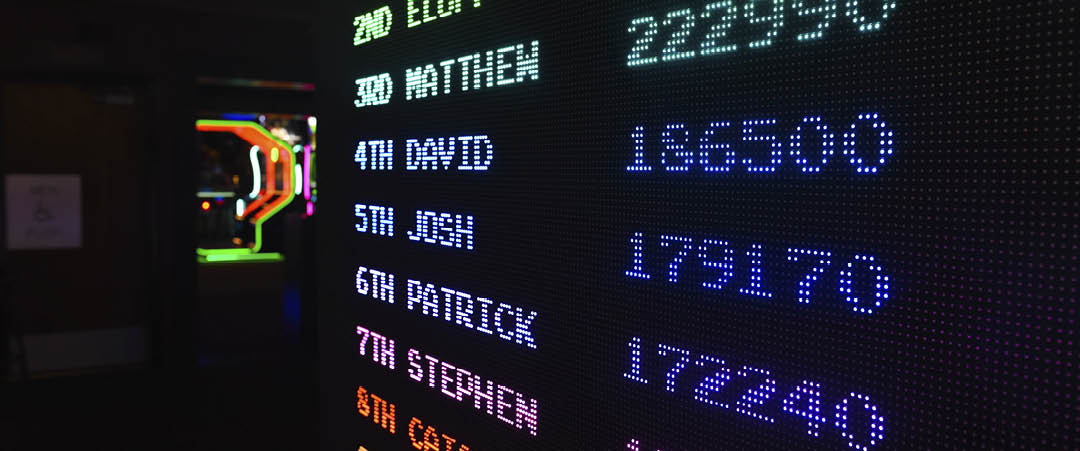
The purpose of the reputation tokens is to help pseudonymous users trust each other in order to interact effectively on the platform. Reputation reflects the positive, platform-sustaining actions performed by a user, and not their current balance of positive action tokens. This would otherwise introduce bias to the reputation system.
With FIN4, users earn reputation tokens by carrying out actions that support and strengthen the entire ecosystem. For example, these actions can include the active obtaining of positive action tokens (zero or low REP reward), participating in proof mechanisms or certain governance mechanisms (medium reward), and successfully proposing official tokens (high reward). In addition, developers should be able to get reputation rewards for contributing to the technical development of the platform.
It should also be possible for users to lose reputation tokens. However, this mechanism is still under development.
Tokens based on reputation – as a form of qualified money – sometimes raise concerns. However, it is important to realize that money is already judged in this way when we shop online. Factors such as location, type of computer and other personal qualifiers are used to discriminate among different kinds of online consumers. We therefore already have reputation systems in our current economic system. FIN4 utilizes reputation not as a mechanism to discriminate among users, but to discourage bad actors and thereby secure the platform. What’s more, it’s opt-in nature and democratic voting give it legitimacy.
Reputation

67
Identity and governance – Reputation

Our idea is to keep the system open so users can connect their digital IDs from other providers. Within the FIN4 system, a username linked to an Ethereum address and a reputation score could be entirely sufficient as ID. But if FIN4 should also allow you to receive tokens tied to a specific citizenship or residency (such as for local recycling tokens in exchange for free museum admission), we could imagine using other forms of ID to validate claims to certain tokens. It might be beneficial if the system were compatible with completely self-sovereign or government-validated digital identity systems.
The ultimate goal of FIN4 is to develop a system design that maximizes privacy (self-sovereign digital ID), and ensures equality (caps and quadratic voting), honesty (reputation) and participation (accessibility).
Identity

68
Identity and governance – Identity

Proof
mechanisms

69


70
Proof mechanisms
Our goal is to create an open-source, distributed platform that allows communities to incentivize sustainable actions using positive action tokens.
Users can browse the available FIN4 tokens and see which actions can be carried out in order to earn the respective tokens. After performing the relevant action (planting a tree, collecting litter or similar), the user needs to submit proof that they actually completed the required action.
But how do we prove actions? How can we incentivize users to report actions truthfully? And how can we ensure reliable data is delivered by sensors?
This is where proof mechanisms come in.
Token creators on the FIN4 platform will be able to choose from a range of default proof mechanisms for their incentivized actions.
These proof mechanisms could include social proofs – requiring other platform users to verify the claims – as well as sensor proofs and oracles based on third-party data. Combinations are also possible.
Whenever we need to prove something – in everyday life or within the FIN4 system – there’s a trade-off between certainty and usability. With FIN4, proving actions represents a particular challenge. A good balance needs to be found between the effort required and the certainty of proving activities. These proof mechanisms also need to be carefully adapted to each individual token type.
For example, a token for promoting a reduction in noise level will use different proofs (including sensors) compared to a token for community cleanup events.
One proof type is the sensor proof, which can directly measure sustainability data. It requires the least human input and can potentially democratize provision of and access to data, thereby promoting the value of decentralization while also maximizing efficiency in the proof process.
Ideally, data fed into FIN4 should come from direct measurement sources. Social proofs only come into play whenever objective measurements are unavailable. Third-party data could be used where data can’t be generated directly within the FIN4 system.
Combinations of proofs will be required to make it more difficult to game the system. Redundancy can be used in this way to increase the reliability of a proof. This is also true in the case of sensors, where a single measurement device may be subject to errors.
With social proofs, we generally rely on a testimonial provided by an individual or a group of (typically unrelated) people. While users may be able to testify for themselves (auto proof), using a password, signature or similar, we mainly want to work with testimonials provided by others. The more users testify to a claim, the more reliable the social proof becomes.
But this also needs to be reconciled with the decreasing efficiency this entails. What’s more, social proofs should be straightforward for random users to verify.
Both individual and group proofs can be based on location, certain skills in a specific area or also unrelated to location or subject. Testimonial power can also be linked to user reputation.
But what happens if two validators don’t agree?
A third validator with a high reputation could be involved to act as tie breaker. The third validator as well as the one they agree with would receive the regular reputation tokens.
Conversely, the user who submits false evidence would lose reputation tokens. However, the defeated validator may appeal the decision by staking more reputation tokens. An additional validator would then be called upon to make the final decision, with the process continuing in this way if further appeals are submitted.
Honey pots involving fake proof tasks could also be used to catch out bad actors and decrease their reputation tokens.
These mechanisms may help maintain the integrity of the FIN4 system, while also striking a balance between usability and reliability.
Proof mechanisms
71
Proof mechanisms
Proof mechanisms

THE FIN4 JOURNEY

72
Almost ten years ago, the original FuturICT project was selected to be the first European Union official flagship pilot. Its goal was to understand and manage complex, global, and socially interactive systems, focusing on sustainability and resilience. By integrating ICT, complexity science and social sciences, it was intended to promote a paradigm shift, facilitating a symbiotic co-evolution of ICT and society. Leveraging data from complex, global ICT systems would enable the development of models of techno/socio-economic systems. In turn, insights from these models would shape a new generation of socially adaptive, self-organized ICT systems.
Following on from these flagship pilots, FLAG-ERA issued transnational calls for building communities to kick-start disruptive, new, large-scale research in Europe. FuturICT 2.0 submitted a proposal and was accepted for funding, commencing in February 2017 for a 4-year period.
At the heart of FuturICT 2.0, our dedicated team at the ETH Zurich node began to work on FIN4, which could enable us to advance sustainable societies through a bottom-up and self-organizing approach.
Our goals were highly ambitious – creating a FIN4 community, building a demonstrator on nascent technology and combining research with development. We therefore had to be resourceful, planning communication, events and coding cycles in a way that allowed us to get the most out of the three years. Involving bachelor’s, master’s and doctoral students was also a priority.
Together with our valued partners, we organized the BIOTS Blockchain & IoT School, later becoming the BETH Blockchain School for Sustainability. Students received education in DLT systems, coding and sustainability topics for two days and then worked on their own proofs of concept over another two days, before presenting them in class.
This programme was so successful that it was regularly oversubscribed and produced excellent use cases. Many of these students subsequently found blockchain-related jobs or stayed to write their bachelor’s or master’s thesis with us.
FuturICT 2.0 progressed by establishing the global Climate City Cup. This programme is aimed at individuals around the world who wish to help tackle climate change at the city level, without waiting for regulations. People can report data in five disciplines and collaborate to improve the sustainability of their living environment. The first Climate City Cup was held from mid-July to mid-November 2019. It is planned to run every second year. Find out here how to participate.
THE FIN4 JOURNEY
73
THE FIN4 JOURNEY

Communication

74

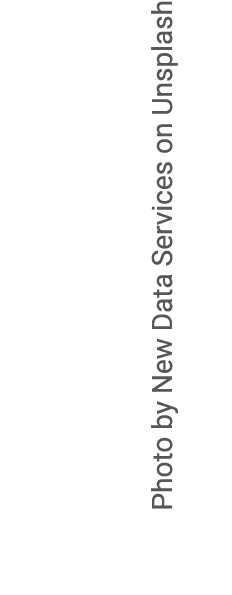
75
Communication
Listen
From the very beginning, FuturICT 2.0 has strongly emphasized the importance of outreach. As a project supported by FLAG-ERA to form new communities around an upcoming technical research field, our goal was to reach both interested scientists as well as representatives of civil society, and leverage their interest for the major theme of sustainability technology.
To have an impact, we realize that we also need to reach out to a broader public, as well as opinion leaders and governmental institutions, raising their awareness for our strategies to enable a sustainable and resilient society.
We activated the following channels to distribute content based on scientific research and information about events:
The FuturICT 2.0 website
Our website is updated on an ongoing basis and features regular new content and image
The FuturICT 2.0 newsletter
We occasionally send out interesting newsletters to the FuturICT community. Subscribe here.
The FuturICT 2.0 YouTube channel
We released our FuturICT2.0 project summary video in July 2018. Since then, we’ve added 26 videos to our channel. Watch here.
The FuturICT 2.0 Twitter account
We’ve tweeted over 500 posts on our Twitter channel and attracted around 600 followers. Follow us.
The FuturICT 2.0 “Future in Practice” podcast
A podcast was recorded covering the FIN4 concept on aess-bar.ch, a project tackling food waste
Communication

Scaling up the Climate City Cup

76
The FuturICT 2.0 team further supports the goals of FIN4 by running a sustainable development initiative, the Climate City Cup.
Following the model of the Olympic Games, the Climate City Cup encourages friendly competition based on collaboration, where citizens from different cities aim to develop open-source solutions to improving the sustainability of their city. The programme fosters collective intelligence and provides a platform for knowledge sharing and exchange, while building bridges between communities working towards sustainable development.
The aim of the Climate City Cup is to improve urban sustainable development around the globe, currently with registered partner cities in Austria, Finland, Germany, India, Mali, Portugal, Slovenia, Spain, Sri Lanka, Switzerland, Turkey and the United States.
The Climate City Cup allows registered contributors living in cities to compete in five disciplines:
•Air quality and reducing pollution
•Increasing flight compensation
(carbon offsetting)
•Mobility and commuting practices
•Circular economy and reducing food waste
• Energy consumption
In November 2019, the first Climate City Cup awards ceremony was held in Zurich. 153 participants took part in 44 cities, generating more than 20,000 data points on sustainability.
Five awards were given to sustainability champions in the above disciplines. Impressive success was demonstrated across the board. For example, the city of Bonn claimed the first prize in the mobility ranking, having improved the sustainable proportion of participants’ commuting habits from 53% in July-August to 83.4% in August-November 2019!
Building on this success, the Climate City Cup seeks to run every two years. You too can take part!
Scaling up the
Climate City Cup
77
Scaling up the Climate City Cup
78
Scaling up the Climate City Cup
The Climate City Cup comprises a task force with representatives from the following organizations:
• ETH Zurich
• Open Geneva
• Complexity Science Hub Vienna
• Climate-KIC
• United Nations Framework Convention on Climate Change
• GLOCHA
• ICLEI Local Governments for Sustainability
• Vios
• TIA Summit
• Compell.io
• Isinnova
Plus selected individuals

Events & Awards

79
FIN4 is a participatory platform which promotes and incentivizes voluntary action in pursuit of sustainable goals that are important to the community. The community is therefore key.
To kick-start this community development as well as raise awareness for our platform, we have organized a range of events:
BETH Hackathon
In February 2019, the Blockchain School for Sustainability (BETH) gave 150 students from ETH Zurich and more than 25 countries around the world the opportunity to learn about and get hands-on experience with blockchain and the Internet of Things, addressing sustainability challenges.
The first half of the week included engaging lectures and sessions on developing decentralized Ethereum applications as well as on how to use the FIN4 platform.
During the second half of the week, student teams participated in the hackathon to develop practical solutions to six challenges. The event concluded with finalists presenting their impressive ideas to the BETH jury.
Thanks to cooperation with MyClimate, the event was also completely carbon-neutral!
FuturICT 2.0 Forums
We organized a FuturICT 2.0 Forum in February and a second forum in November 2019, where we introduced the FIN4 platform to a broader public. Participants were also able to try out the demonstrator and create their own token proposals.
These interactive forums also covered the underlying sustainability challenges, digital democracy and citizen empowerment.
Further events
We’ve also organized and engaged in a wide range of other events including:
•Workshop on Reinventing Society in the Digital Age (CSH, Vienna)
•BlockchainX Workshop on E-Identity (ETH, Zurich)
•Press Conference: How Could Blockchain Technology Contribute to Paris Agreement Implementation? (UNFCC, Bonn)
•3rd International Workshop on Data-Driven Self-Regulating Systems (University of Arizona, Tucson)
•Hack4Climate (Bonn)
•FuturICT 2.0 Default Proof Mechanisms Workshop (Zurich)
And many more!
Events
80
Events & Awards


81
Events & Awards
For our work on FIN4 and related topics, the FuturICT 2.0 team and other contributors have been honoured with a number of awards and accolades.
Awards

Use cases

82

World Wide Fund for Nature (WWF)
WWF Romania’s “Wild AI” project aims to combine nature conversation with socioeconomic development in the Carpathian region as part of efforts to reintroduce bison to the wild.
FIN4 offered ideas in a workshop in autumn 2018 about how a token-based incentive system could help align the interests of impact investors, local communities and hunters, as well as WWF Romania.
Keep It Small and Simple (KISS)
KISS is a non-profit time bank project in Zug and six other Swiss cities. The organization is interested in piloting blockchain technology to make it easier to obtain time vouchers as tokens and also reduce errors. The scheme aims to address the challenges of demographic transformation in society, sustainably reducing costs by allowing members to continue living at home longer while also receiving important support.
Collaboration with both of these projects is in progress. The Blockchain School for Sustainability, organized by the FIN4 team, gave several student groups the opportunity to explore the use cases and propose proofs of concept and prototypes to address the challenges of the two projects.
What’s more, the FIN4 team is engaging in dialogue with a range of other projects to potentially include as field partners once the demonstrator is mature enough to support a self-onboarding process.
Use cases

Try out our latest live version of
FIN4Xplorer at demo.finfour.net.
Visit finfour.net for more information.
83
Use cases – Use cases

FuturICT 2.0
research inter-
secting with FIN4

84

Apart from engaging with many scientists and DLT projects around the world, the FuturICT 2.0 team has also been working on a diverse range of topics over the full funding period.
For instance, our Latvian node has been advancing the acceptance of socio-technical systems and the use of sustainability assessments – such as for designing bicycle networks.
Our French partner has written about the anatomy of the web of trust, gossiping and opinion dynamics as well as social influence models.
In Belgium, our FuturICT 2.0 partners published work on modelling structures and predicting dynamics.
Our Italian partner presented an agent-based model of paper publication and consumption which allows the scientific community to assess the effect of two different evaluation mechanisms, peer review and reputation, on the quality of manuscripts.
Further research has explored the establishment of spheres of influence on Twitter, as well as democracy in the age of Big Data and artificial intelligence.
FuturICT 2.0 research
intersecting with FIN4

85
FuturICT 2.0 research inter- secting with FIN4
Outlook:
Where to go
from here?

86


87
Outlook: Where to go from here? – Overview of the various Finance 4.0 research projects
As a FLAG-ERA project supported by SNF, FuturICT 2.0 initiated the work on the core socio-ecological incentive system – FIN4. FuturICT 2.0 has created related concepts, released an initial software demonstrator and spread the idea within academia and beyond.
The two FIN4Plus and FIN4Xplorer projects are supported by EIT Climate-KIC. They initiated a co-design process where the ideas and concepts flow into the EIT Climate-KIC strategy for running demonstrations. What’s more, the initial demonstrator software has been completely overhauled, incorporating all the different modules into a single, coherent and decentralized application ready for small-scale, experimental use.
In the EXPOMONDES (“Exploring the Post-Monetary Design Space”) project, the FIN4Xplorer application will be trialed in a series of experiments with real communities, generating feedback from real users to help refine the software design and functionality. This will enable a subsequent release based on these insights.
We’ll then be ready to apply the concepts and application to larger-scale experiments, which EIT Climate-KIC plans to roll out as part of the DD-LT phase (“Deep Demonstration on Long-Termism”).
The first three projects have given us basic concepts and tools for FIN4. EXPOMONDES will provide further solutions based on external validation through experimentation. And DD-LT will seek to make the platform fit for real-world use on a larger scale.
Overview of the
various Finance 4.0
research projects
88
Outlook: Where to go from here? – Overview of the various Finance 4.0 research projects

We consider innovation at the systems level as a means of advancing the sustainability transformation. Systems innovations refer to integrated and coordinated interventions in economic, political and social systems, throughout entire value chains, using a portfolio of experiments. This approach is designed to produce viable pathways to change by identifying options as well as social and behavioural inflection points, and scaling transformative solutions.
Systems innovation recognizes that:
A portfolio approach enables us to learn fast and reduces risks associated with transformation, utilizing a spread of options for exploring ways forward.
Systems innovation


89
Outlook: Where to go from here? – Systems innovation

Deep demonstrations:
showing what is possible

Learning by doing leads to action; experience, exploration and making sense of multiple connected experiments and demonstrations can generate alternative business and industrial models.
Understanding and using the properties of systems is key to transformation. Cities, land use, materials, finance and human societies are all complex adaptive systems with self-transforming properties; they change dynamically in response to different interventions.
Accelerating systemic change with innovation means connecting a supply of innovation with demand-side actors: problem owners and those with high ambition for change. A demand-led approach starts by identifying the complexity of the problem and the necessary scale for intervention.
Deep demonstrations of the potential of this change are central to the transformation we’re trying to achieve and are essential for providing inspirational examples of what’s possible. These start with a demand-led approach, working with city authorities, regional bodies, governments and industry leaders committed to a transformation to net zero emissions and a resilient future.
Taking a systems innovation approach, we match this demand with supply, utilizing the full force of our innovation community to take multiple levers of change simultaneously by rapidly testing options.
EIT Climate-KIC has initiated eight deep demonstrations to cover a wide range of challenges.
90
Outlook: Where to go from here? – Deep demonstrations: showing what is possible
91
Outlook: Where to go from here? – Deep demonstrations: showing what is possible
• Healthy, clean cities
• A just transition for Europe’s heavy
industrial and coal regions
• Net zero, resilient maritime hubs
• Circular, regenerative economies
• Forging resilience in Europe’s most
vulnerable regions
• Long-termism in investments
• Turning regional landscapes from
carbon sources to carbon sinks
• Reforming food systems and
meat-based diets
Our FIN4plus and FIN4Xplorer projects form part of the deep demonstration on long termism.
Deep demonstrations


92
Outlook: Where to go from here? – Deep demonstration on long-termism
The DD-LT design group has collaborated to create concepts, frameworks and designs that will flow into a portfolio brief to invite participants to the upcoming deep demonstration which commences later in 2020.
One of the group's main tasks is to define five areas of action for formulating and testing hypotheses in 2020 and beyond.
From 2020 onwards, we’ll continue to contribute to DD-LT with EXPOMONDES (Exploring the Post-Monetary Design Space), building incentive systems that go beyond current monetary systems.
During this project, we’ll leave the lab and work hands-on with our field partners on experiments in real environments.
For instance, we’re partnering with KISS to experiment with a multi-token time bank system for social work. We’ll also experiment with collective incentive designs and more complex token systems for WWF Romania and Switzerland. Many more real-world experiments are in the pipeline including Fridays for Future Zurich, allowing us to facilitate this sustainability transformation across multiple contexts.
Deep demonstration
on long-termism
93
Outlook: Where to go from here? – Deep demonstration on long-termism

Summary

94


95
Summary
The world faces a set of major sustainability issues – global inequality, financial crises, overconsumption and conflict for natural resources.
On a global level, we observe a misalignment of goals and incentive structures. There are some common goals with respect to sustainability: the United Nations Sustainable Development Goals and the Paris Agreement. But while agreeing on a joint set of goals in a supranational context is certainly important, it represents just a first step in a longer transition.
We therefore propose a new approach for achieving sustainability, based on voluntary individual contributions with real-time feedback. (See: FIN4 Framework)
If we want to compare the options, a digitally empowered participatory society is perhaps harder to reach, but expected to be much more resilient and more successful in the long run than a top-down controlled society.
With the FIN4 system and the associated demonstrator, FuturICT 2.0 has shown that it is technically feasible to introduce a distributed system for incentivizing sustainability.
At numerous events and during the first edition of the Climate City Cup, hundreds of scientists, companies and individuals around the world have demonstrated their interest in this approach.
In subsequent projects further developing the FIN4 concept, new partners are expected to join the movement and help establish a new pillar in international sustainability action.
Summary
96
Summary
Blockchain
A blockchain is a distributed ledger that is collectively written and maintained by a network through a distributed consensus mechanism. (Dapp 2019)
Consensus
Consensus is the mechanism through which entries are written to the distributed ledger technology, while adhering to a set of rules that all participants enforce when an entry containing transactions is validated. (Ballandies, Dapp, and Pournaras 2019) http://arxiv.org/abs/1811.03419
Cryptocurrency
A cryptocurrency is a digital asset designed to work as a medium of exchange using cryptography to secure the transactions and to control the creation of addition units of the currency. (Wikipedia - cited in Technical Report M12, where the definition is somewhat longer)
Cryptoeconomic design (CED)
The options and choices of how a cryptoeconomy regulates value exchange among its participants is referred to as cryptoeconomic design (CED). CED plays a key role in the stability of a DLT system in terms of convergence, liveness,and fairness (Ballandies, Dapp and Pournaras 2019).
DApp
A decentralized application within the context of Web 3.0 which does not rely on a centralized provider.
Distributed ledger technology (DLT)
Distributed ledger technology encompasses systems of distributed ledgers, consensus mechanisms and other elements. Here, nodes participate in a distributed data structure which contains entries serving as digital records of actions, governed by a consensus mechanism. A blockchain is a type of DLT. (Ballandies, Dapp, and Pournaras 2019) http://arxiv.org/abs/1811.03419
Externality
An externality is a cost or benefit that affects a party who did not choose to incur that cost or benefit.
Fiat money
Conventional paper and coin-based currency issued by a centralized entity, typically a central bank, and declared as legal tender by governments. Examples include euros, dollars and pounds sterling.
Fork
In blockchain terminology, a fork typically refers to a situation in which a previously incompatible change in protocol occurs, resulting in the divergence of two sets of protocol. For instance, this can happen when a community around a cryptocurrency disagrees on the implementation of code changes, thereby splitting the community and creating a new token in parallel with the existing token following the established rule set.
Gas
In the Ethereum protocol, gas is the fee required in order to carry out a transaction or run a smart contract on the blockchain.
Internet of Things
The Internet of Things (IoT) is a system of interrelated devices, machines, objects, animals or people that are assigned unique identifiers and given the ability to transfer data over a network without the need for manual interaction.
Meta tokens
Meta tokens are tokens that give a user access to platform services and / or the right to participate in decisions that concern the overall structure, implementation and further development of a system.
Oracle
Blockchains can’t directly communicate with the outside world. They therefore rely on trustworthy external data sources, known as oracles. Oracles can be based on software (websites and portals) or hardware (IoT sensors).
Proof of Stake
A proof-of-stake protocol is a consensus mechanism according to which network participants can mine or validate entries depending on the number of tokens they hold.
Proof of Work
A proof-of-work protocol is a consensus mechanism that secures the network by requiring work from participants in order to write to the blockchain. In the case of Bitcoin, for example, miners have to expend processing power and energy in order to solve hash functions and mine a new block.
Quadratic voting
Quadratic voting is a means of decision making that helps prevent problems associated with the accumulation of power in multi-vote systems. The “price” of a vote equal its square; each additional therefore comes at a significantly higher price.
Smart contract
A piece of executable software code that is written onto the Ethereum blockchain. Once deployed, it is immutable and can be executed by anyone on the network.
Token
A token is a store of value issued within a DLT system and which can be used as a medium of exchange or unit of account (Ballandies, Dapp, and Pournaras 2019).
Token curated registry
A list of objects (e.g. web links, tokens, etc.) that are maintained by a group of users. They manage the list through proposing, challenging and voting using a special TCR token. In the case of finance 4.0, the GOV token is used to manage the list of official Positive Action Tokens.
Transaction
Transactions are the digital representations of actions that are logged in the distributed ledger of a DLT system (Ballandies, Dapp, and Pournaras 2019).
Web 2.0
The Internet of online applications that are offered by central providers. The most well-known examples of these providers include Facebook, Amazon and Google.
Web 3.0
The emerging form of decentralized online applications which do away with the need for central providers.
Glossary
97
Glossary
•Ballandies, Mark C., Dapp, Marcus M., Dapp, and Pournaras, Evangelos (2018) _Decrypting Distributed Ledger Design - Taxonomy, Classification and Blockchain Community Evaluation_. Available at:
https://arxiv.org/abs/1811.03419.
•British Petroleum (2019) _Statistical Review of World Energy_, _BP global_. Available at: https://www.bp.com/en/global/corporate/energy-economics/statistical-review-of-world-energy.html (Accessed: 24 March 2020).
•Dapp, M. M. (2019) ‘Toward a Sustainable Circular Economy Powered by Community-Based Incentive Systems’, in _Business Transformation through Blockchain_. Palgrave Macmillan, pp. 153–181. doi:
www.doi.org/10.1007/978-3-319-99058-3_6
•Dapp, M. M., Klauser, S. and Ballandies, M. (2019) _Finance 4.0 Design: Technical Report_. Report. ETH Zurich. doi:
www.doi.org/10.3929/ethz-b-000331093
•Dobler, M., Ballandies, M. and Holzwarth, V. (2019) ‘On the Extension of Digital Ecosystems for SCM and Customs with Distributed Ledger Technologies: Requirements Anlysis, Innovation Assessment, and Prototype Design for the Lake Constance Region’, in _2019 IEEE International Conference on Engineering, Technology and Innovation (ICE/ITMC)_, IEEE, p. 8792646. doi: www.doi.org/10.1109/ICE.2019.8792646
•Helbing, D. (2014) _Qualified Money - A Better Financial System for the Future_. SSRN Scholarly Paper ID 2526022. Rochester, NY: Social Science Research Network. doi: 10.2139/ssrn.2526022. https://papers.ssrn.com/sol3/papers.cfm?abstract_id=2526022
•Helbing, D. _et al._ (2019) ‘Will Democracy Survive Big Data and Artificial Intelligence?’, in Helbing, D. (ed.) _Towards Digital Enlightenment: Essays on the Dark and Light Sides of the Digital Revolution_. Cham: Springer International Publishing, pp. 73–98. doi:
www.doi.org/10.1007/978-3-319-90869-4_7
•Helbing, Dirk (2014) Interaction Support Processor. https://patents.google.com/patent/US20160350685A1/en
•Van den Hoven, J. _et al._ (2019) ‘The Blockchain Age: Awareness, Empowerment and Coordination’, in Helbing, D. (ed.) _Towards Digital Enlightenment: Essays on the Dark and Light Sides of the Digital Revolution_. Cham: Springer International Publishing, pp. 163–166. doi:
www.doi.org/10.1007/978-3-319-90869-4_13
•International Monetary Fund (2010) ‘Reserve Accumulation and International Monetary Stability - Supplementary Information’, _IMF_. Available at: https://www.imf.org/en/Publications/Policy-Papers/Issues/2016/12/31/Reserve-Accumulation-and-International-Monetary-Stability-Supplementary-Information-PP4457 (Accessed: 24 March 2020).
•Mühle, A. _et al._ (2018) ‘A survey on essential components of a self-sovereign identity’, _Computer Science Review_, 30, pp. 80–86. doi: www.doi.org/10.1016/j.cosrev.2018.10.002
•Nakamoto, S. (2008) ‘Bitcoin: A Peer-to-Peer Electronic Cash System’. Available at: https://bitcoin.org/en/bitcoin-paper (Accessed: 24 March 2020).
•Rössner, M., Dapp, M. M. and Fach, F. (2018) _Prospects of Distributed Ledger Systems: Requirements Engineering And Analysis of existing Mechanisms for Multidimensional Incentive Systems (Finance 4.0): Project studies in Management and Technology. Final Report_. Report. ETH Zurich. doi:
www.doi.org/10.3929/ethz-b-000387085
•Urban, M. C. (2015) ‘Accelerating extinction risk from climate change’, _Science_. American Association for the Advancement of Science, 348(6234), pp. 571–573. doi:
www.doi.org/10.1126/science.aaa4984
•Voshmgir, S. and Zargham, M. (2019) _Foundations of Cryptoeconomic Systems_. Available at: https://epub.wu.ac.at/7309/ (Accessed: 24 March 2020).
References
98
References